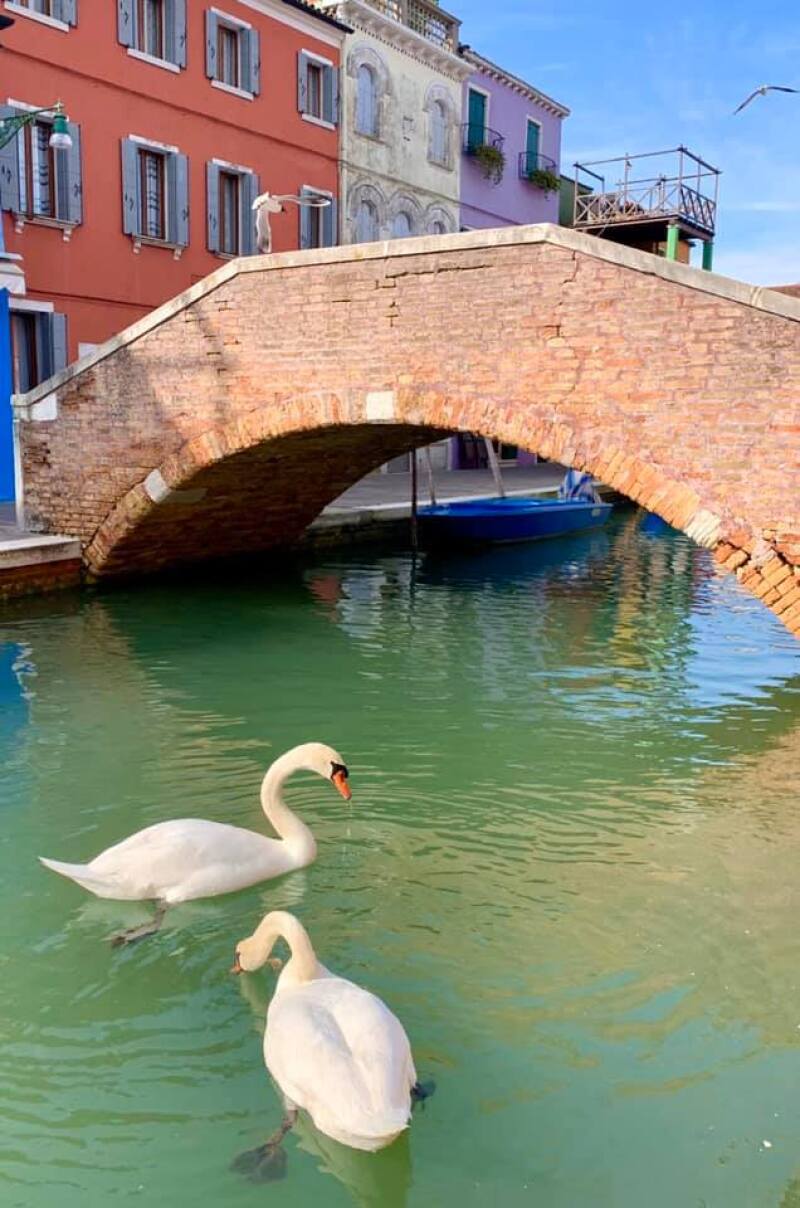Since Italy went under nationwide lockdown March 10 in response to the COVID-19 pandemic, some of the images of Venice circulating on social media are beautiful and haunting at once—the lagoon’s water, typically murky, is now so clear that on some of the shallower canals it’s even possible to see straight down to the bottom.
At first glance, it may appear like a silver lining during a global pandemic: One of the world’s most beloved cities is returning to an earlier, unspoiled state. Headlines proclaiming “Coronavirus lockdown eases pollution, Venice canal runs clear” and Twitter videos of dolphins swimming in its harbor feel like a rare bit of good news. That optimistic conclusion, however, is not the whole story.
Venice hasn’t seen clear canal water in a very long time. Dolphins showing up too. Nature just hit the reset button on us pic.twitter.com/RzqOq8ftCj — Gianluca De Santis (@b8taFPS) March 17, 2020
Turns out the video in the now viral Tweet of the “Venetian” dolphins was actually filmed at a port in Sardinia, National Geographic reported.
As for the clear waters? According to Kristen Thyng, assistant research professor at Texas A&M University, water quality is not generally a good indicator of polluted water. “Pollution can impact how water appears, but perfectly clear water can contain toxic substances,” she says. (Though Thyng does not have first-hand knowledge of the data and current situation in Venice, she is a professor of oceanography.) The office of the mayor of Venice also points to other factors to explain the new clarity of the water: “[It] now looks clearer because there is less traffic on the canals, allowing the sediment to stay at the bottom,” a spokesman says.
That’s right: the discharged fuel, exhaust, and other pollutants from the ships calling on Venice and the boats plying its canals are not the primary factors when it comes to the water’s appearance—instead, it’s typically organic matter and the activity stirring up sediment that is more significant. “Material that is suspended in water, especially sediments and algae, can have major impacts on water quality,” Thyng says. Similarly, the greenish hue of the water in Venice, familiar to many visitors to the city, isn’t the result of pollution. “Water can also be colored by the type of soil and plants that live near the water source,” she says.

Swans are regularly spotted in the canals of Burano, an island in the Venetian lagoon.
Photo by Marco Capavilla
Though there isn’t data to indicate that water quality in Venice has improved significantly, air pollution is a different matter. Thanks to the temporary closures of factories in northern Italy and fewer water taxis and buses emitting exhaust, air quality in the region has significantly improved—so much so that the European Space Agency has been able to capture the vanishing pollution from satellites monitoring Italy. (A similar decrease in air pollution levels occurred in China following the country’s adoption of measures to limit the spread of COVID-19.)
While the lockdown remains in place in Italy, for now, most citizens of Venice have to be content with admiring the swans and schools of fish from a distance, ordered to stay within their homes as they wait until the day when the city can once again welcome visitors.
“I am strictly following the instructions given by the Italian government and I am not going out if it’s not really necessary,” says Giampaolo Ottazzi, the general manager of the Belmond Hotel Cipriani. “Although I can confirm Venice seems a bit of a ghost city at this time, and it’s even more silent than how it is generally.
“I spend my days admiring its beauty from my altana [a rooftop terrace typical of Venice], and now I can really appreciate every sunrise and sunset,” he continues. “But most of all I keep on working and getting ready for the hotel to reopen its doors because in our DNA it’s engraved to never give up.”
Correction: This article originally appeared online on March 18, 2020; it was updated on March 20, 2020 to clarify that the dolphin videos were captured in a port in Sardinia and not Venice.
>>Next: What Italy’s Lockdown Actually Means During the Coronavirus Outbreak








